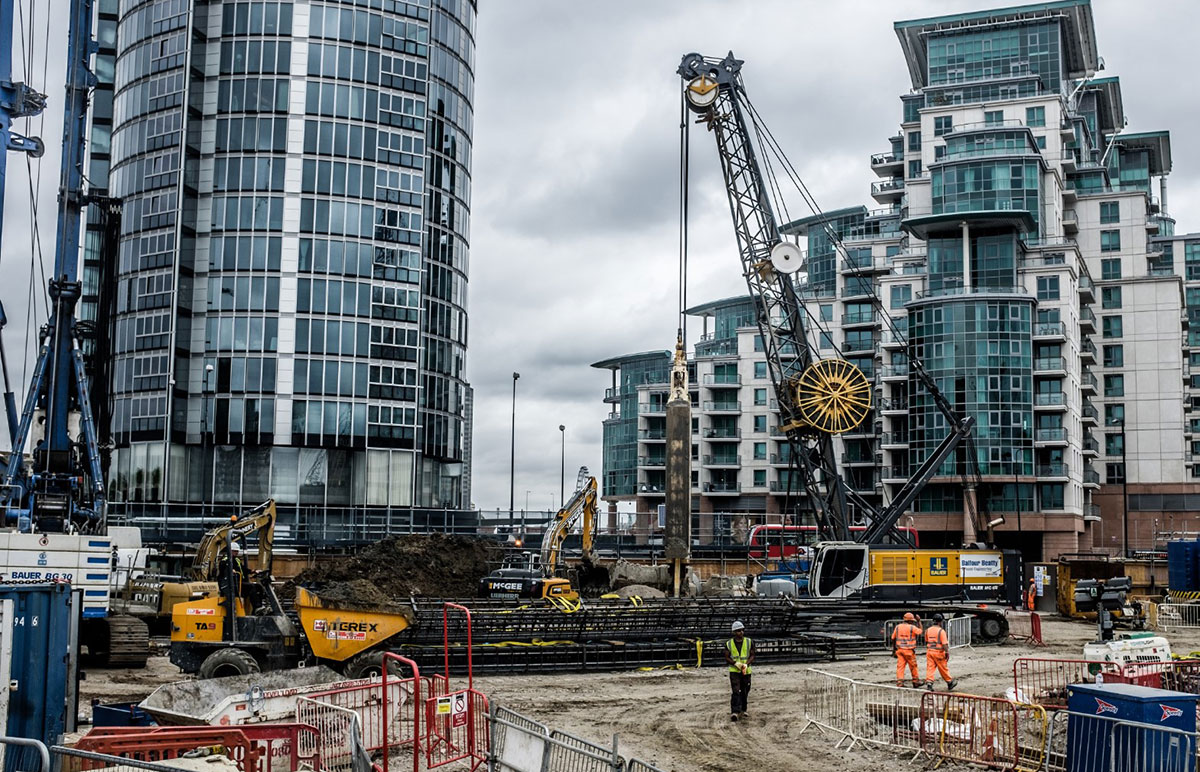Geotheta Fundamentals Explained
Geotheta Fundamentals Explained
Blog Article
Geotheta Things To Know Before You Get This
Table of ContentsTop Guidelines Of GeothetaAn Unbiased View of GeothetaGeotheta Things To Know Before You Get ThisWhat Does Geotheta Mean?Excitement About Geotheta

They conduct site investigations, gather samples, carry out lab tests, and examine information to examine the viability of the ground for building jobs - Geotechnical Engineers. Based on their findings, geotechnical designers give referrals for structure style, incline security, maintaining frameworks, and mitigation of geotechnical dangers. They team up with other experts, such as architects, structural designers, and building and construction groups, to guarantee that geotechnical considerations are integrated right into the total task layout and application
By examining the habits and homes of soil and rock, they can recognize possible geotechnical risks such as landslides, dirt negotiation, or slope instability. Their knowledge aids protect against failures or accidents that might threaten lives and residential or commercial property. Here are some thorough responsibilities and duties of a geotechnical engineer: Website Investigation: Geotechnical designers conduct site investigations to collect data on subsurface problems.
They interpret the information to understand the residential or commercial properties and habits of the dirt and rock, including their strength, leaks in the structure, compaction attributes, and groundwater problems. Geotechnical Analysis and Style: Geotechnical engineers evaluate the information collected throughout website examinations to analyze the security and suitability of the website for construction jobs. They do geotechnical estimations and modeling to assess variables such as birthing ability, settlement, slope stability, side planet pressures, and groundwater circulation.
Unknown Facts About Geotheta
Structure Design: Geotechnical designers play a crucial duty in making foundations that can safely sustain the designated structure. They assess the soil conditions and tons needs to identify the ideal structure type, such as superficial structures (e.g., footings), deep foundations (e.g (https://www.goodreads.com/user/show/180594840-ian-hammond)., heaps), or specialized techniques like soil enhancement. They consider factors such as negotiation restrictions, bearing capacity, and soil-structure communication to establish optimum foundation designs
They examine building and construction strategies, display site activities, and perform field assessments to validate that the style recommendations are adhered to. If unpredicted geotechnical concerns emerge, they evaluate the situation and offer referrals for remediation or adjustments to the layout. Threat Analysis and Reduction: Geotechnical engineers evaluate geotechnical hazards and dangers associated with the project site, such as landslides, liquefaction, or soil erosion.

Cooperation and Communication: Geotechnical designers work very closely with various other specialists included in a task, such as engineers, architectural engineers, and building and construction groups. Efficient interaction and partnership are vital to integrate geotechnical considerations into the general job style and building procedure. Geotechnical engineers supply technical experience, answer questions, and make sure that geotechnical demands are fulfilled.
Unknown Facts About Geotheta
Below are some kinds of geotechnical engineers: Structure Designer: Structure designers specialize in making and examining structures for structures. They analyze the soil problems, lots needs, and site characteristics to establish the most proper structure type and design, such as superficial structures, deep foundations, or specialized techniques like heap structures.
They evaluate the aspects influencing slope stability, such as dirt properties, groundwater conditions, and slope geometry, and establish techniques to stop slope failings and alleviate dangers. Quake Engineer: Quake engineers specialize in analyzing and developing structures to stand up to seismic pressures. They evaluate the seismic danger of a site, review soil liquefaction potential, and develop seismic layout criteria to make sure the security and resilience of frameworks during quakes.
They perform area testing, collect examples, and assess the collected information to define the soil residential properties, geologic formations, and groundwater conditions at a website. Geotechnical Instrumentation Designer: Geotechnical instrumentation engineers concentrate on tracking and gauging the behavior of dirt, rock, and frameworks. They mount and preserve instrumentation systems that check aspects such as soil settlement, groundwater degrees, incline motions, and architectural displacements to assess performance and give early cautions of potential problems.
Little Known Questions About Geotheta.
They carry out tests such as triaxial tests, debt consolidation examinations, straight shear examinations, and permeability examinations to collect information for my website geotechnical analysis and layout. Geosynthetics Designer: Geosynthetics designers concentrate on the style and application of geosynthetic materials, such as geotextiles, geogrids, and geomembranes. They use these products to improve soil stability, enhance inclines, supply drain solutions, and control erosion.
They often tend to be investigative individuals, which suggests they're intellectual, reflective, and analytical. They are interested, systematic, reasonable, logical, and rational. Some of them are also social, implying they're kind, generous, participating, client, caring, helpful, empathetic, sensible, and pleasant - Consulting Engineer.
In the office environment, geotechnical designers use specialized software program devices to execute estimations, develop designs, and assess data. They prepare records, review job specs, connect with customers and team members, and coordinate project tasks. The office setup supplies a favorable environment for research, evaluation, and collaboration with various other specialists included in the task.
How Geotheta can Save You Time, Stress, and Money.
They often check out task websites to perform site investigations, analyze geotechnical conditions, and gather information for analysis. These brows through include traveling to various places, sometimes in remote or challenging terrains. Geotechnical designers might perform soil sampling, conduct examinations, and display construction activities to guarantee that the geotechnical elements of the job are being carried out properly.
Geotechnical designers likewise work in specialized geotechnical laboratories. Geotechnical laboratory engineers function thoroughly in these settings, taking care of screening devices, operating instruments, and videotaping information.
Report this page